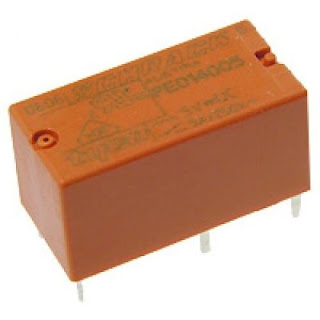After a bad experience with a purchased low pass filter, I wanted to make my own for my WSPR transmitter for 10m and 20m bands. The ARRL have some good documents on line for filters. A low pass filter should prevent harmonics of a higher frequency from entering the transmitted signal. After looking into other people's designs on line, I would put the values into some modelling software to see the results. I understand that computer models rarely reflect real life, but they are a good starting point. I wanted to use achievable homebrew inductors and preferred values for other components that are close to the ideal model values. The filter I decided to make was a 3rd Order Butterworth design. I started with the inductors. I had some miniature 545nH inductors that I liberated from a scrap radio circuit. Then I started to add preferred value capacitors into the model. I decided to move the cut-off frequency forward a bit so that my working frequency would be in the very low loss section before the 'knee' at -3dB. I'm only working at 10dB so losses have to be kept to a minimum. Some purists would say you must use silver mica capacitors which are very expensive. If you look at commercial offerings though, they don't seem to use anything special in their circuits for low power use. I am going to use this filter QRP, about 10mW, for my WSPR transmitter. I will be using normal multi-layer ceramics for my project. Below you can see the outputs from the modelling software:
I built both filters onto an old audio switch board that I found in my bits drawer. It's ideal because there is a large surrounding ground plane around the connections for shielding. I achieved the 273nH inductor by using two 545nH in parallel, and similarly with the capacitors to get the desired values.
I can switch between 3 bands if required. Next stage was to test the circuits to see if I had come close to the modelling software results. Running the filters through my VNA set for S21 Gain, I got the following results. The markers indicate target frequency, 2nd and 3rd harmonics:
I'm impressed how similar the graph results are between virtual and real readings. The insertion loss figures were higher than the modelling suggested. This could be due to using lower quality components. So, does it work? Well I set my WSPR rig running for a while and got these results after only 1 hour:



















































